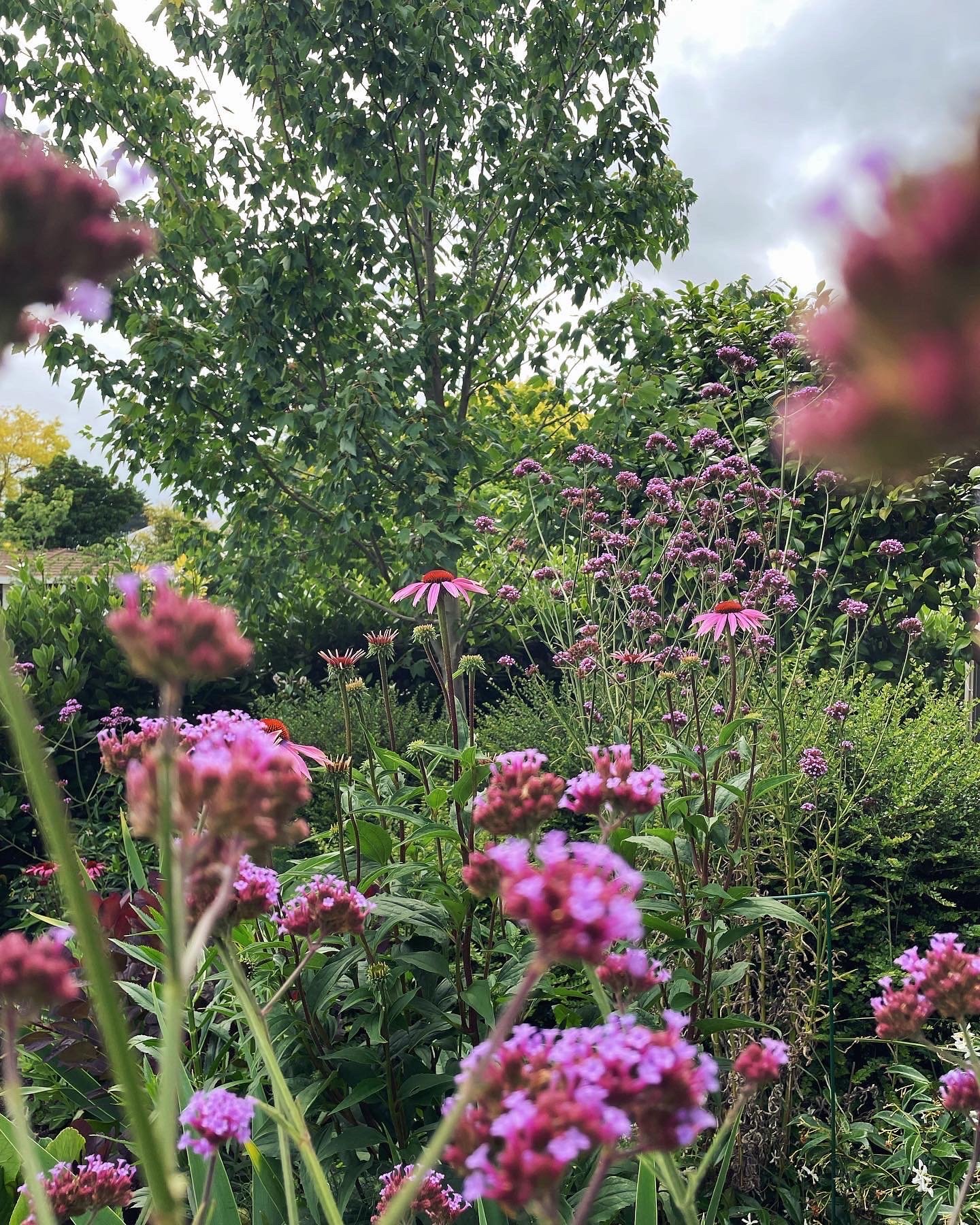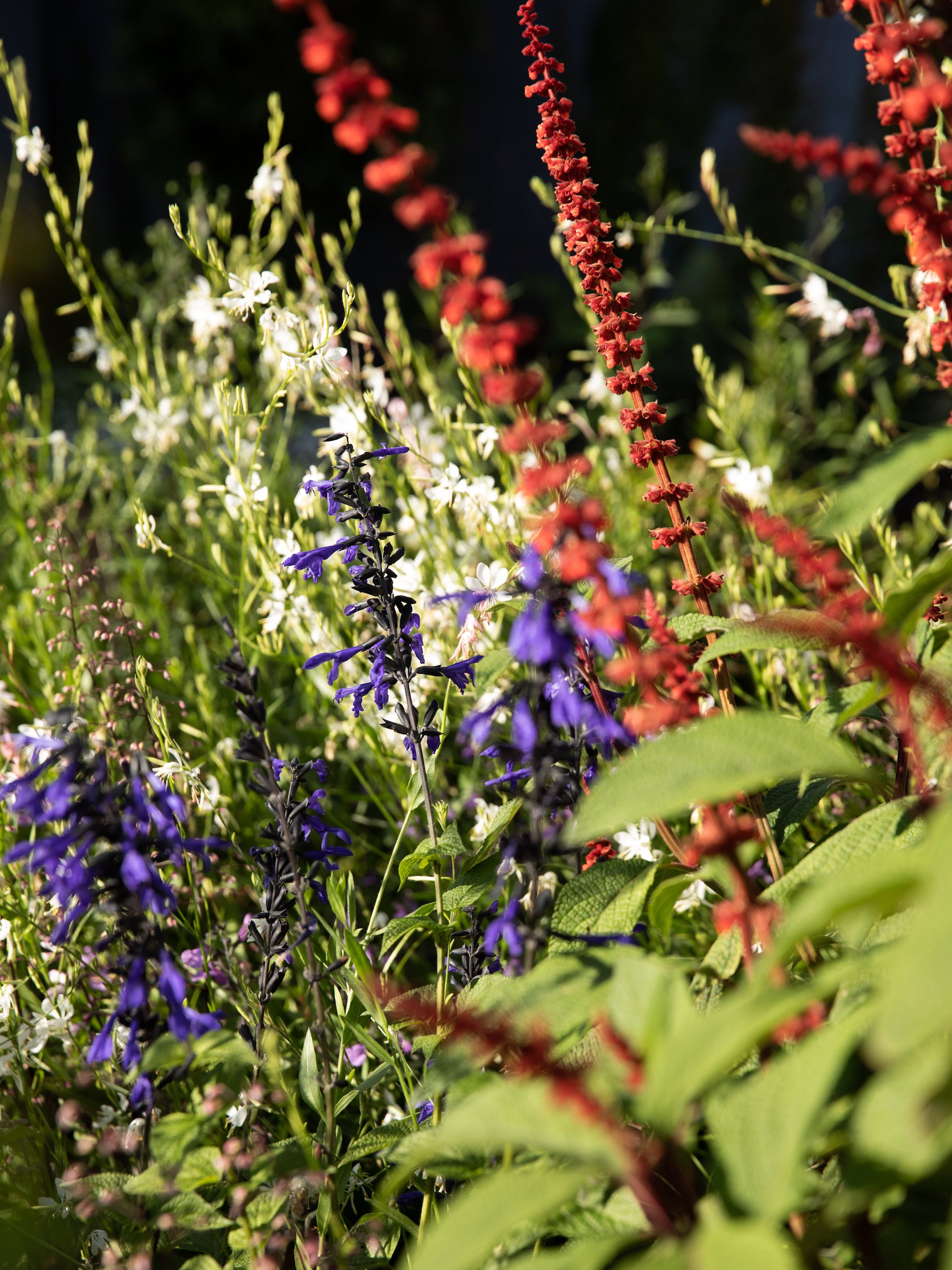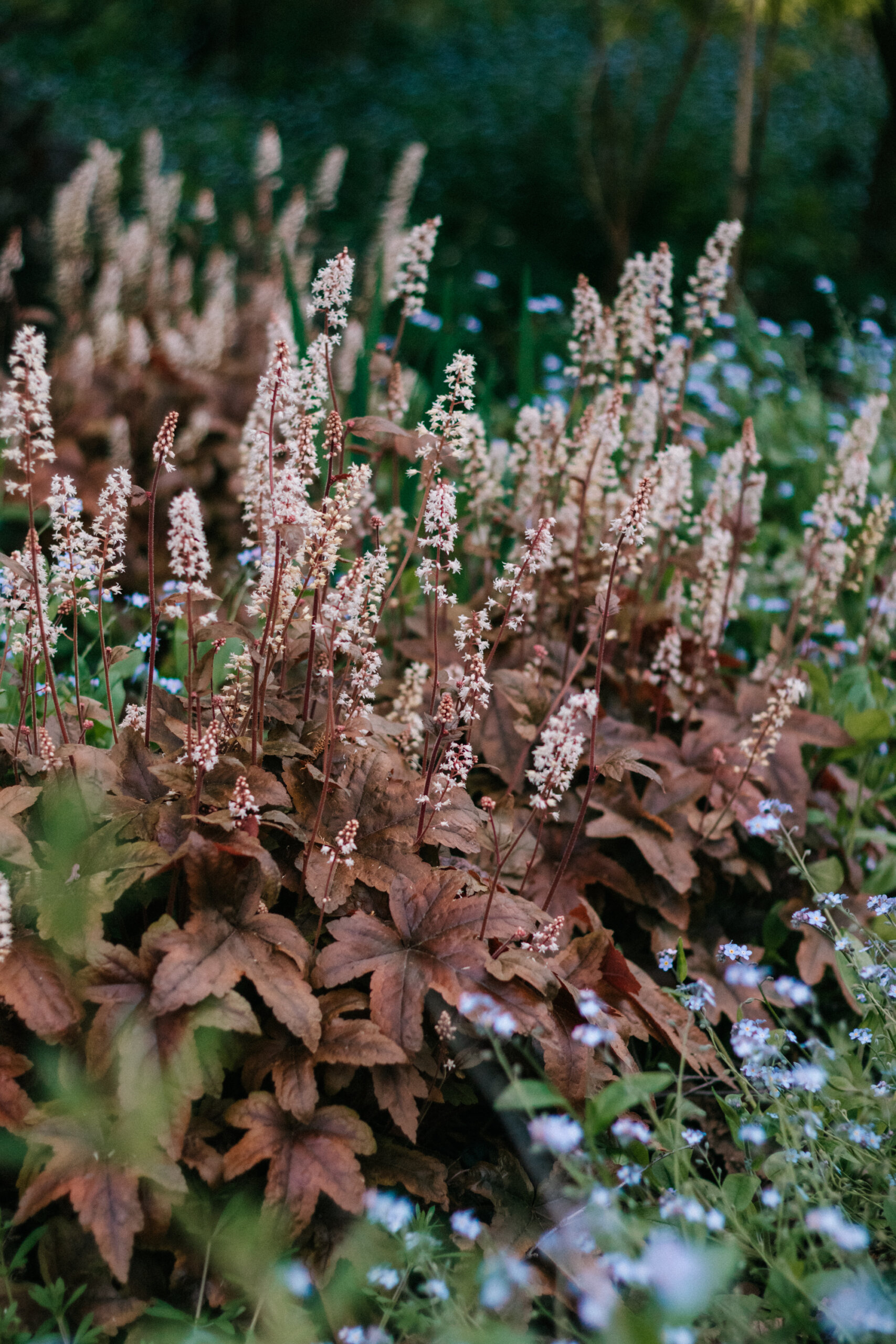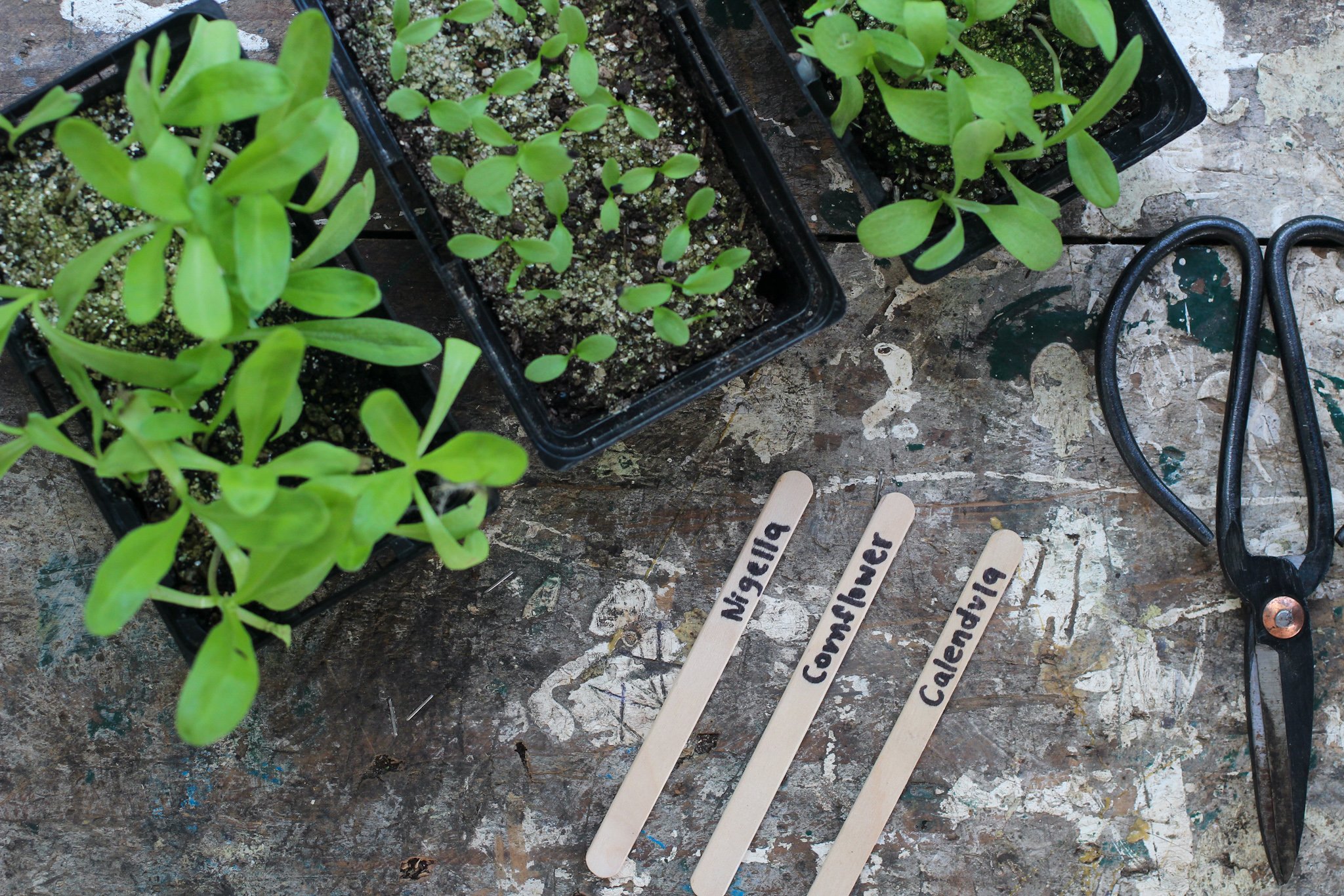A Guide to Growing Perennial Plants That Flower All Summer
There is something magical about a summer garden that boasts colour, texture, wild-life and long-lasting florals. One of the best (and easiest ways) to achieve this is with perennials — and particularly perennials that flower all summer long.
Perennials are a great choice for any garden for lots of reasons. They’re usually relatively low maintenance, they come back year after year. Perennials are a great way to provide a reliable source of colour and beauty in the garden.
Here we’ll take a look at some of our favourite perennials that bloom all the way through the hot summer months (and sometimes beyond)…
What Are Perennial Plants & How Do They Differ From Annuals?
“Perennials are plants that recede down to their roots each year, to regrow, flower and seed again.” — Julia Atkinson-Dunn, Petal Power
Perennial plants are plants that live for more than two years, while annuals only live for one growing season. They go into a sort of hibernation during the winter months, getting ready to provide you with plenty of blooms next season.
Annual plants bloom for a few weeks or months and then fade away. Perennials, on the other hand, can be distinguished from annuals by their ability to come back and bloom year after year.
Perennials come in a variety of shapes and sizes. They tend to have deeper roots and require less maintenance than their annual counterparts.
Related Reading: Plant Types — Perennials, Annuals & Biennials

Benefits of Planting Flowering Perennials
Perennials are plants that come back year after year, and they typically bloom for an extended period of time each year.
Having at least one plant that blooms all summer long can give your garden a boost of colour and texture during the hottest months.
Here are some of the benefits of planting flowering perennials:
Low maintenance
Once established, perennials will continue to grow and flower for several years with very little effort on your part. Ideal for people who want a garden that’s full of life but don’t necessarily have the time to constantly maintain it.
Weather tolerant
Many species of perennial flowers can tolerate both hot and cold temperatures. So even if the weather takes an unexpected turn, your garden will usually hold up and stay looking dazzling.
Long-lasting blooms
Perennials stand out from annuals as many perennial plants provide long-lasting blooms that keep coming back every year. Some perennials will bloom all summer and can often even last into the autumn months.
Variety
Perennial plants come in a variety of colours, shapes and sizes. They give gardeners the ability to create interesting arrangements within their gardens with different forms of foliage and blooms. There are infinite options to add structure and interest to your garden with perennials.
Pollinator attractants
Perennial plants are ideal for attracting wildlife to your garden. Butterflies and bees, in particular, are attracted to the flowers. Perennial plants also help to promote biodiversity by providing food and shelter for insects, birds and other animals. By planting a few perennials in your garden, you can help support the local ecosystem and make your garden more beautiful at the same time!
Value for money
Perennial plants are a great bang for your buck! Although they may be more expensive to buy as established plants in comparison to annual seedlings, your perennials will last for many years and represent good value for money in the long run.
18 Types of Perennial Plants That Will Add Colour & Texture to Your Garden All Summer
Perennial plants provide a reliable source of beauty and colour in the garden, year after year. Some of them are truly remarkable and give a lot more than others when it comes to their showtime time in your garden.
Here’s a list of perennials that continuously bloom throughout summer and will give you a spectacular show all season:
Echinacea purpurea in Camilla Jørvad’s wild cottage garden.
— Echinacea Purpurea (Purple Coneflower)
An excellent choice for a sunny perennial cottage-style or herbal garden. Sometimes known by its common name: purple coneflower. This leggy plant is most often seen with striking purple flowers on its long stems, but also comes in shades of pink or white.
Flowers stick around for a long time throughout summer. A great cut flower and pollinator friendly. Echinacea are hardy perennials and is tolerant of dry soil and the summer heat.
Gaura lindheimerini in the Deadly Ponies garden, Ponsonby Auckland. Landscape design by Jared Lockhart, photo by David Straight.
— Gaura Lindheimeri (Whirling Butterflies)
Gaura is a gorgeous addition to any garden for its movement and texture, along with its long-lived flowering season and height in the garden.
Gaura has dainty flowers that resemble butterflies which bloom in white, pink or a pink/white blend.
Plant in full sun – this low maintenance perennial is very heat and drought tolerant. The taller varieties will grow up to 1.2 metres in height (depending on the variety) and will require a trim back at the end of its flowering season in autumn.
Verbena bonariensis in Emma Sage’s garden, underplanted with summer flowering perennaial Scabiosa caucasica
— Verbena Bonariensis (Purpletop vervain)
The ethereal verbena bonariensis has tightly clustered tiny violet flowers at the top of each long stem, with sparse leaves below. Monarch butterflies are drawn to this tall and airy perennial, as well as bees and other insects.
Flowers can grow up to 1.8m tall. The height and vibrant purple of this plant will add drama to any summer garden.
Related reading: Plant Profile — VERBENA BONARIENSIS
— Rudbeckia Fulgida (Goldsturm)
Rudbeckia Goldsturm is a cheerful bright yellow daisy-like flower with brown centres. (This is different from its counterpart, Rudbeckia hirta (commonly known as black-eyed susan), which is an annual).
Rudbeckia is very long blooming. They are both pest and drought-tolerant plants. Requires minimal care, other than pruning spent flowers at the end of the season. Butterflies, bees and other beneficial insects love this plant.
A salvia planted in the background of Emma Sage’s garden.
— Salvia
Perennial salvias produce tall spikes of pollinator attracting flowers, ranging in shades of blue, pink, red or purple flowers. Salvias are part of the mint family (Lamiaceae) and are a heat and drought tolerant survivor in the summer garden. Put them in a sunny spot to thrive.
— Shasta Daisy (Leucanthemum × Superbum)
Shasta daisies are classic white daisies with yellow centres. These plants produce swaths of large, tall flowers that bloom all summer long. They require little attention, apart from sometimes needing to be propped up (especially after wind/rain). They grow vigorously and are very easily propagated by division.
— Argyranthemum Frutescens (Marguerite daisies)
Marguerite daisies’ long-lasting blooms last so well through the spring and summer months. They add a bright pop of colour to any garden or container/pot.
Marguerite daisies grow as a dense perennial shrub that get to the height of about 20-80cm. These shrubs cover themselves in masses of daisies and are available in many different colours. They’re especially seen in yellows, pinks and white.

— Scabiosa Caucasica (Perennial pin-cushion flower)
Scabiosas are a sun-loving, butterfly attracting plant. Perennial pin-cushion flowers are easy to propagate by division and seem to flower almost year round, and certainly all summer long.
They tend to be low growing, ideal for borders and filling gaps in your garden beds. Plant in a sunny, wind-sheltered position.
— Phlox Paniculata (Garden phlox / perennial phlox)
An elegant herbaceous plant that produces clusters of fragrant, cute flowers. Phlox is super long flowering from late spring to early autumn. There are a wide variety of colours, usually available in varying shades of pinks, purples and white.
Phlox is an ideal perennial border plant. Plant in moist soil, sun or partial shade.
— Perovskia Atriplicifolia (Russian sage)
These woody perennial plants produce metre tall feathery flower spikes and silvery foliage that bloom through summer and autumn. Russian sage is very hardy to heat, drought, cold and wind.
— Gaillardia Aristata (Blanket flower)
A blanket flower is a hardy US native of the prairies with brilliant red daisy-like flowers with yellow rims. This prolific bloomer is one of the best perennials for a long summer flowering season.
It is an easy to grow, drought-tolerant plant which doesn’t take very much care. Bees and beneficial insects love it too.
— Geranium Himalayense (Cranesbill geraniums)
Cranesbill geraniums are perfect as a groundcover, perennial border plant, in rock gardens or in pots. They have delicate long-blooming flowers which come in shades of white, pink, purple and blue.
This is a hardy geranium for all conditions from full sun right through to dry shade. Whether you plant in sun or partial shade, make sure the spot is sheltered with good drainage. Many varieties are also frost hardy.

— Nepeta Mussinii (Catmint)
Catmint, with its grey-green foliage and lavender-blue flowers, is actually part of the herbaceous mint family. Catmint is compact and hardy, making it ideal as a cottage border or ground cover.
Cats love its strong aroma, and so do bees. Catmint starts flowering in early summer and repetitively blooms throughout the season.
— Liatris Spicata (Blazing star / Gayfeather)
These tall, spiky plants produce spikes of purple, pink or white flowers that bloom all summer long. They are a great option for adding interesting height to the garden. Liatris spicata is both long blooming in the garden and can be great cut flowers as they are long-lasting in a vase too.
— Coreopsis (Tickseed)
Coreopsis is a cheerful and lengthy bloomer with daisy-like flowers that come in a range of sizes, heights and colours including yellow, pink, red and blended colours. Coreopsis is low maintenance, drought-tolerant and a favourite for beneficial insects.
— Hemerocallis (Daylilies)
Daylilies will provide you with months of vibrant colour in your summer, autumn and spring garden — blooming from spring through until autumn. Most commonly seen blooming with orange, red and yellow flowers, and sometimes with pink flowers. They’re hardy, easy to grow and produce plenty of flowers throughout the seasons.
Where to Start: Tips for choosing the right flowering perennials for your garden:
If you’re looking for low-maintenance plants that will thrive with little care, consider options like heuchera and daylilies which are some of the easiest perennials to grow.
For some drama, go for tall varieties like rudbeckia fulgida or Russian sage.
And if you want to attract bees and butterflies to your garden, plant echinacea or verbena bonariensis.
With so many choices available, there’s sure to be a perennial plant that’s perfect for your summer garden.
Salvias, gaura lindheimerini and heuchera fronds in the Deadly Ponies garden, Ponsonby Auckland. Landscape design by Jared Lockhart, photo by David Straight.
How To Plant & Care For Your Perennial Flowers So They Bloom All Summer Long
While most perennials are low-maintenance, there are a few things you can do to lengthen their blooming time and thrive through their flowering season.
To get the most out of your perennials give them plenty of sunshine, water and rich soil – but once they’re established they should require minimal maintenance during their growing season.
Here are some tips on how to get the most out of your perennials:
SUN
Plant them in full sun. More often than not, summer blooming perennial plants need at least six hours of direct sunlight each day in order to bloom.
FEED
Feed your perennial plants with organic compost, animal manure and blood & bone. Layer one or more of these in the soil when planting new perennials. You can top up existing plants by scattering around the drip line of plants – usually best done in spring and/or autumn.
MULCH
Mulching your plants with organic material like pea straw, wood chips or bark will help keep the soil moist and prevent weeds from taking over. Organic mulch also provides essential nutrients to the plants.
WATER
Perennial plants need to be watered deeply and regularly, especially during hot summer days. It’s best to water early in the morning so that the soil has time to absorb the moisture before it evaporates in the heat of the day.
PRUNE
Regular pruning will help keep your perennial plants looking tidy and encourage new growth and blooms. Deadhead spent flowers to encourage new growth. Cut back stems after flowering to promote bushier growth and remove any dead or damaged foliage throughout the season.
Have a summer blooming perennial plant to add to our list? Let us know in the comments below.






















